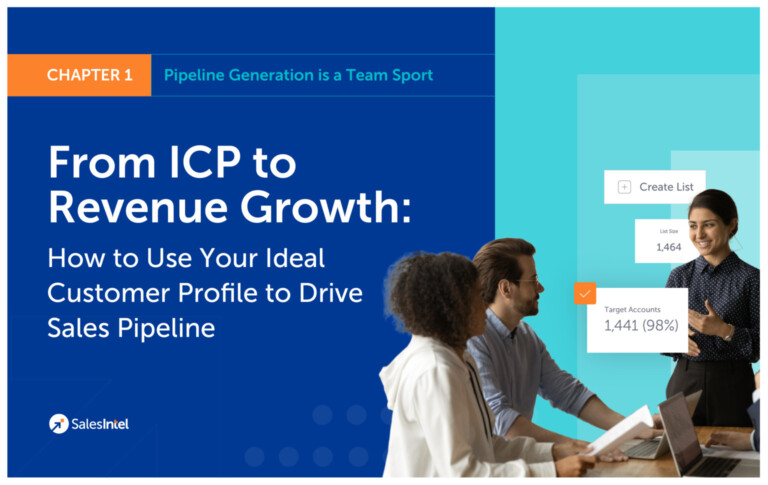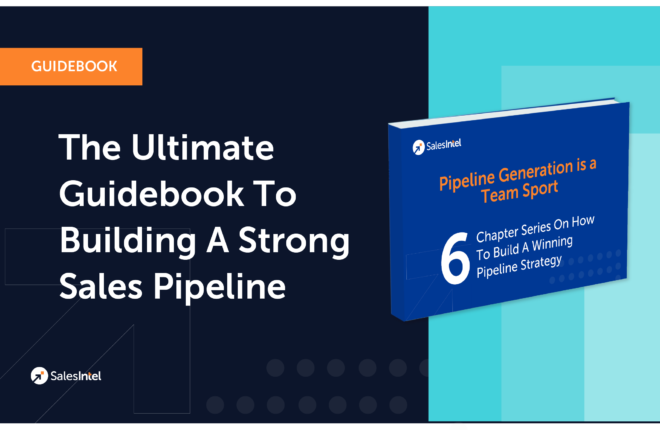A sales pipeline is a process that outlines the various stages involved in converting leads into customers and plays a vital role in ensuring a steady flow of revenue.
Sales leaders must understand the importance of an effective sales pipeline and how to manage one for long-term, sustainable growth. In this blog, we will explore what a sales pipeline is, its key components, and best practices for sales leaders to optimize their sales pipeline.
What is a sales pipeline?
A sales pipeline is a visual representation of the sales process a potential customer goes through from initial contact to client retention and upselling. It’s a structured approach to managing a sale that helps sales teams prioritize and manage their activities and resources to maximize revenue growth.
At each stage of the pipeline, the sales team takes specific actions and engages with the potential customer to move them closer to a sale. The pipeline allows sales teams to track the progress of each potential customer, prioritize their efforts, and identify areas for improvement in the sales process.
There are seven stages of a typical sales pipeline may vary depending on the company and industry but generally include:
- Prospecting: This is the stage where the sales team identifies and qualifies potential customers who need the product or service being offered. This could involve lead generation through various channels such as referrals, cold calling, email campaigns, and social media.
- Qualification: Once a prospect is identified, the sales team assesses whether they have the authority, budget, and need for the product or service. This is important to determine whether the prospect is worth pursuing further or not.
- Needs analysis: In this stage, the sales team works to understand the prospect’s specific needs and challenges. This helps them tailor their pitch and solution to the prospect’s specific pain points.
- Presentation and demonstration: This is where the sales team presents their product or service to the prospect and demonstrates how it solves their needs and challenges.
- Proposal: After the presentation and demonstration, the sales team provides a proposal that outlines the product or service, its benefits, and pricing details. The proposal may also include case studies, testimonials, and other relevant information to help persuade the prospect to buy.
- Closing: This is the final stage where the sales team negotiates and finalizes the terms of the sale, including price, delivery, and payment terms.
- Follow-up: After the sale is closed, the sales team follows up with the customer to ensure their satisfaction and address any concerns or issues that may arise. This stage is critical for building long-term relationships and generating repeat business.
By understanding the different stages of a sales pipeline, sales teams can better manage their sales process, prioritize their activities, and improve their chances of closing more deals.
Why is a sales pipeline important?
Having a well-defined sales pipeline provides several, tangible benefits for the sales team.
- Better visibility into the sales process:
A well-defined sales pipeline provides clear visibility into where each potential customer is in the sales process, as well as any roadblocks or bottlenecks that may be hindering progress. This allows sales teams to identify issues early on and take corrective action. You ensure that potential customers don’t fall through the cracks.
- Improved forecasting accuracy:
Sales teams can accurately forecast their future revenue based on the number of potential customers in each stage of the pipeline and the average length of time it takes to move them through the pipeline. This helps sales teams better plan and allocate resources. Sales leaders gain higher confidence in their revenue projections.
- More effective sales team management:
Sales managers can more effectively manage their teams by identifying areas where sales reps may need additional coaching or support. They can also track the performance of individual sales reps and identify best practices that can be shared across the team.
- Higher win rates and revenue growth:
Sales teams can focus their efforts on the most successful sections of the sales pipeline helping them allocate their time and resources more effectively. This, in turn, leads to higher win rates and revenue growth, as sales teams can close more deals and generate more revenue from their sales efforts.
Having a consistent sales pipeline provides greater visibility, improves forecasting accuracy, enhances sales team management, and ultimately leads to higher win rates and revenue growth.
Key insights for sales leaders
Let’s review what sales leaders should remember when evaluating and growing their sales pipeline.
-
Pipeline generation is a team sport
Sales pipeline generation often becomes the singular responsibility of the sales department. However, pipeline generation is a team sport.
Who’s going after the prospects before the sales team starts prospecting and after the deal is closed? This is where that pipeline generation as a team sport concept comes into play.
If you involve all the relevant teams, you’ll have at least customer success, marketing, and RevOps with sales as your core team of people. You need everyone to be involved and own the outcome and own the definition and quantification of each pipeline stage. Everyone being involved means that everyone feels ownership.
Remember to stay on track, rely on your ICP, document your success, and scale at a sustainable rate. Your pipeline will be highly efficient, fast-moving, and reliable.
-
Ensuring alignment between sales and marketing
Ensuring alignment between sales and marketing is crucial for generating a healthy sales pipeline. Sales and marketing teams should work together to develop a clear understanding of their target audience, the company’s messaging, and the customer’s journey. The default relationship can be antagonistic as each side blames the other for not playing their role effectively.
Collaboration is needed for the creation of high-quality content, including case studies, white papers, and webinars, that resonates with the target audience. They should also work together to track and analyze data to identify areas for improvement and opportunities for growth. By ensuring alignment between sales and marketing, companies can create a more effective sales pipeline that drives revenue growth and customer satisfaction.
-
Regularly review and refine the sales process
The sales process is a key component of the sales pipeline, and it’s important to review and refine it regularly. This can involve analyzing data on customer interactions, tracking sales metrics, and identifying bottlenecks in the sales process.
Once these areas are identified, businesses can streamline the sales process for the highest possible ROI. Refining the sales process can involve changes to sales scripts, adjustments to the sales funnel, or re-evaluating the roles and responsibilities of the sales team.
-
Leverage technology to automate and streamline the pipeline
Technology can play a significant role in automating and streamlining the sales pipeline. For example, businesses can use customer relationship management (CRM) software to track leads and automate certain parts of the sales process, such as sending follow-up emails or scheduling meetings.
Sales teams can also use sales engagement platforms to streamline communication with prospects and automate tasks such as social media outreach or email campaigns. By leveraging technology in this way, businesses can increase efficiency, reduce manual labor, and ultimately improve the sales pipeline.
-
Provide ongoing training and coaching for sales reps
The success of the sales pipeline depends heavily on the skills and knowledge of the sales team. Providing ongoing training and coaching can help sales reps stay up-to-date on the latest sales techniques, improve their communication and negotiation skills, and better understand the products or services they are selling.
This can lead to a more effective and efficient sales pipeline, with reps better equipped to close deals and generate revenue. Training and coaching can take many forms, including workshops, role-playing exercises, and one-on-one coaching sessions.
Leverage data for a healthier sales pipeline
In the modern business world, data is king, and B2B data has become an invaluable resource for sales pipeline generation.
By using firmographic data, businesses can gain a comprehensive understanding of their target customers’ characteristics, including their industry, company size, revenue, and location. This data allows sales teams to segment their target audience and develop more targeted sales strategies to reach potential customers.
Technographic data provides insights into the technologies and tools used by target customers, which can help businesses tailor their product offerings and sales messages to align with their customers’ needs.
With access to intent data, businesses can identify the online behaviors of their target customers and use that information to create targeted prospecting campaigns that reach potential customers when they are already in the market for a solution.
By leveraging B2B data like firmographic, technographic, and intent data, businesses can streamline their sales pipeline generation process and improve the effectiveness of their sales and marketing strategies. With a better understanding of their target audience’s characteristics and behaviors, businesses can create more targeted messaging and develop personalized campaigns that resonate with their customers.
By utilizing the latest technology to collect and analyze data, businesses can optimize their sales process and generate a steady flow of high-quality leads. Ultimately, leveraging B2B data can help businesses drive revenue growth and achieve their sales objectives in a competitive marketplace.
Data providers have always been crucial in bridging the gap between knowing which account to contact and reaching the right person. SalesIntel’s database has 24+ million validated emails and 17 million+ human-verified decision-makers.
SalesIntel also includes Bombora Buying Intent Data, which identifies accounts that have signaled an interest in researching and purchasing for a given industry across 12,000 buying intent topics. So you will not only have a healthier sales pipeline, but you will also be able to target qualified leads ready to buy.
You can schedule a SalesIntel demo tailored to your ideal client profile and see the opportunities available for your sales pipeline.





